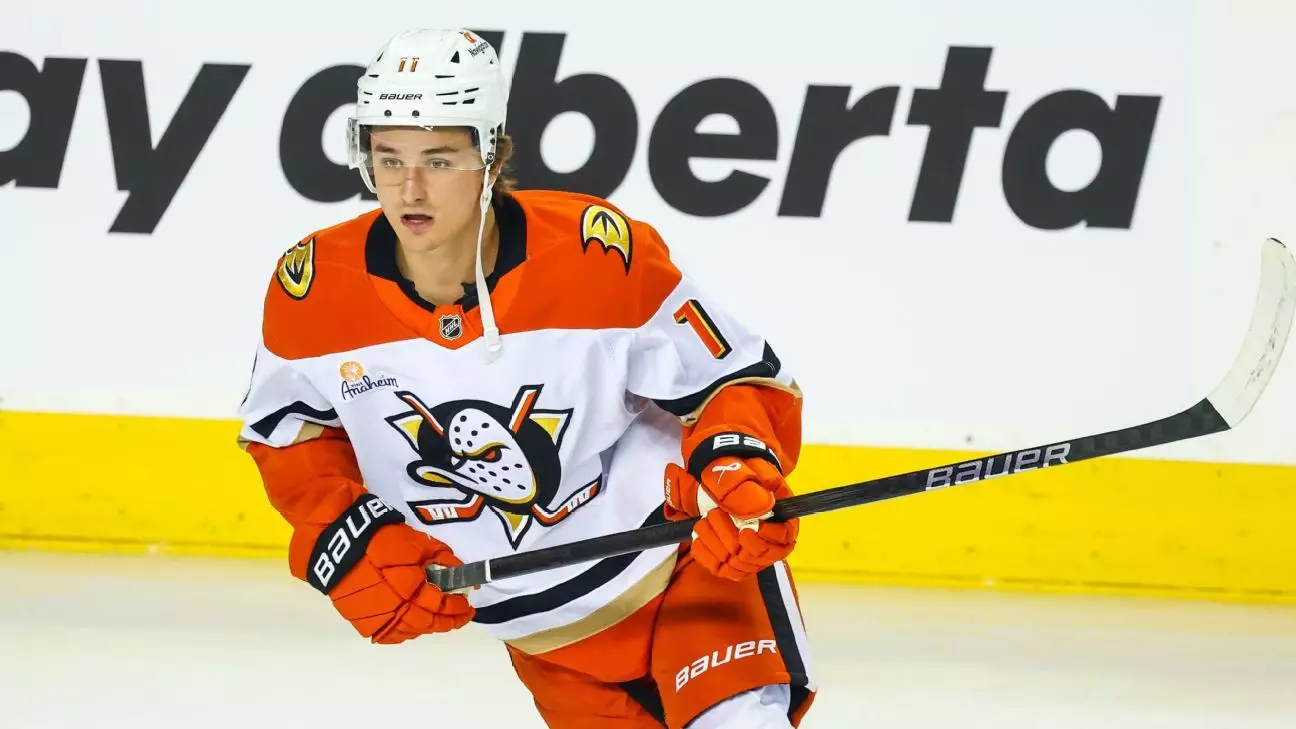On a day that promises to reshape the landscape of the NHL, the Philadelphia Flyers have secured an exciting new asset in forward Trevor Zegras, previously a star for the Anaheim Ducks. The trade, which sees the Flyers send Ryan Poehling, a second-round pick in 2025, and a fourth-round pick in 2026 back to Anaheim, is more than just player movement; it represents a significant strategic shift for Philadelphia, a franchise eager to escape its recent struggles and reestablish a winning identity.
Zegras, often touted for his immense potential, brings a dynamic skill set to the ice. At just 24 years old, he is already a two-time 20-goal scorer and has delivered two consecutive seasons with 60 or more points. The Flyers, who finished a dismal 24th in goals per game last season, desperately needed a player who can change the game offensively, and Zegras could be that player. His addition could complement the existing talents of Sean Couturier and Noah Cates, setting the stage for a stronger foundation for future success.
Assessing the Flyers’ Ambitions
The Flyers’ decision to trade for Zegras signals their commitment to rejuvenating an underperforming squad. With a relatively young average age of 26.09 years, this team is not just looking towards immediate gratification, but also toward building a sustainable core that can compete for years to come. Zegras fits snugly into this vision. However, the key term surrounding this acquisition is “potential.” The potential to reignite the offensive flare that once made him a breakout star of the league is tantalizing, yet riddled with uncertainty.
Recent seasons have cast a shadow of doubt over Zegras’ ability to reclaim his past glory. Concerning injuries and performance inconsistencies raise valid questions. Having faced challenges that hindered his output, the stability of his newfound home in Philadelphia will be crucial. The question remains: can the Flyers create an environment that allows Zegras to flourish again? Pairing him with talented wingers like Tyson Foerster, Travis Konecny, or even rising star Matvei Michkov could keep the offensive wheels turning, ensuring both the player and franchise benefit from this high-stakes gamble.
The Ducks’ Strategic Exit
From the Ducks’ perspective, shedding Zegras was not an easy decision but appears increasingly prudent. With the emergence of prospects like Leo Carlsson—who proved to be an effective top-line center—and Mason McTavish, who led the team in goals last season, the Ducks find themselves with depth that makes Zegras expendable. Carlsson’s contributions highlight a transformation that could make the Ducks more competitive, while also easing the pressure to retain a player whose salary may not reflect his current role in the team’s hierarchy.
Financial considerations also weigh heavily in this decision. With more than $36 million in projected cap space, the Ducks appear well-positioned. However, with key players like McTavish and Lukas Dostal needing new contracts, smart allocation of this space is essential. The trade provides Anaheim not only with immediate relief from Zegras’ salary but also with the opportunity to invest in depth players without overextending financially on a potentially misused asset.
Moreover, the considerations extend beyond the immediate future; Anaheim has its eyes set on the next offseason, where the importance of smart fiscal decision-making will become even clearer. The Ducks can now focus on nurturing their young talents without the added pressure of managing Zegras’ contract.
Future Implications for Both Front Offices
Both the Flyers and Ducks’ front offices have made calculated moves with various long-term implications. Philadelphia is banking on Zegras’ resurgence to alleviate their offensive woes while aiming to establish a youth-centric profile. Conversely, Anaheim is decisively shifting their focus towards cultivating young stars and maintaining financial flexibility amidst a highly competitive league landscape.
The move for Zegras may ultimately serve both teams’ aspirations, redefining their current challenges into opportunities. While many will analyze the success of this trade based on immediate performance, the real test will come down to how well both franchises leverage this pivotal moment into sustained success, a challenge that hues the NHL’s competitive continuum. Both teams have embarked on parallel journeys—each one uniquely poised, yet intertwined—toward realizing their respective visions for the future.

